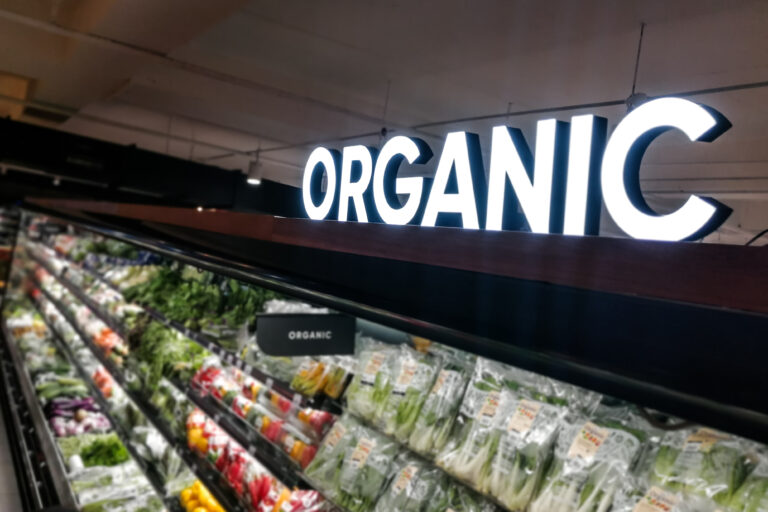With USDA’s declaration of its newly published Strengthening Organic Enforcement Final Rule as “the biggest update to the organic regulations since the original Act in 1990,” it carries echoes of the passage of FSMA which has often been cited as “the most sweeping reform of our food safety laws in more than 70 years.” Will the organic rule have as significant an impact on that industry as FSMA has had on FDA-regulated operations?
To first address the elephant in the room, i.e., the consumer perspective of organic foods as being safer and healthier, the rule continues to avoid any mention of these concepts. Instead it focuses on the “organic integrity” of the products – the guaranteeing of which is a primary purpose of the new rule, with the elements necessary for this being “transparent supply chains, trusted interactions between businesses, and mechanisms to verify product legitimacy.”
The significant growth and change of the organic industry since the passage of the original rule of 1990 – which established the National Organic Program (NOP) – has made the ensuring of these elements ever more complex, with some links in the chain having no oversight from USDA certifying agents. This lack of direct enforcement and the premium prices charged for organic goods have created opportunities for fraud. USDA uses the example of an organic egg supply chain along with a number of actual fraud cases to show where the faults can lie.
Likely of key interest to, and impact on organic operations, is the Final Rule’s mandate for annual on-site inspections, that includes mass-balance audits and verification of traceability within the operation and back to the previous certified operation. Additionally, while the NOP previously recommended that unannounced inspections be performed at five percent of the operations, this is now mandated in the new rule.
Including the above, the rule includes 13 key actions, the first three of which implement 2018 Farm Bill mandates:
- Reduce the types of uncertified entities in the organic supply chain that operate without USDA oversight—including importers, certain brokers, and traders of organic products.
- Expand the use of NOP Import Certificates to all organic products entering the U.S.
- Clarify the NOP’s authority to oversee certification activities and act against an agent or their office and require certifying agents to notify the NOP upon opening a new office.
- Nonretail containers used to ship or store organic products must be labeled with organic identity and be traceable to audit trail documentation.
- Certifying agents are to conduct unannounced inspections of at least 5% of the operations they certify, conduct on-site inspections at least annually, and complete mass-balance audits and verify traceability back to the previous certified operation during the annual inspections.
- Certifying agents are to issue standardized certificates of organic operation generated from the USDA’s Organic Integrity Database (OID) to simplify the verification of valid certificates and to keep accurate and current certified operation data in OID.
- Ways that certified operations may submit organic system plan changes are clarified, with the goal of reducing paperwork.
- Specific qualification and training requirements are established for certifying agent personnel, including minimum education and experience qualifications and requiring continuing education.
- Conditions for establishing, evaluating, and terminating equivalence determinations with foreign government organic programs are to be based on an evaluation of their organic foreign conformity systems.
- The NOP may initiate enforcement action against any violator of the OFPA, clarify what actions may be appealed and by whom, and clarify NOP’s appeal procedures and options for mediation.
- Certification requirements for producer group operations include the meeting of certain criteria to qualify for certification and the use of an internal control system to monitor compliance.
- A calculation method for the percentage of organic ingredients in a multi-ingredient product for the consistent interpretation and application of the regulation across the industry.
- Certified operations are to develop and implement improved recordkeeping and organic fraud prevention processes and procedures, and certifying agents are to conduct supply chain traceability audits and develop and implement information-sharing processes.
The effective date of the rule is March 20, 2023, with USDA allowing one year from that date for compliance (due March 20, 2024).
While there are significant differences between this NOP Final Rule and those of FSMA, despite the commonality of their heraldry as grand reforms, it is interesting – and of significance – that traceability currently plays a large role in both. USDA-regulated operations may have breathed a sigh of relief that FDA’s Final Traceability Rule, passed in late 2022, did not apply to them. But as can be seen by the prominence of traceability in this organic rule along with other actions, such as the recent USDA proposal to strengthen animal disease traceability regulations, it is evident that farm-to-fork traceability will continue to be a driving force in the food industry. As a force led by both regulators for food safety and consumers for transparency, it is an area on which all food establishments need to be focused, regardless of the regulatory body or regulations to which you are subject.
Traceability also is an area in which TAG has specific expertise and is in the process of developing tools for industry. So give us a call should you need assistance – and keep an eye on this space for more on TAG’s Traceability Toolkit.






